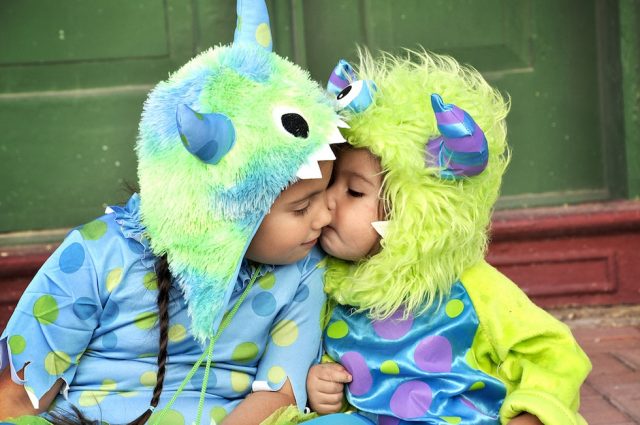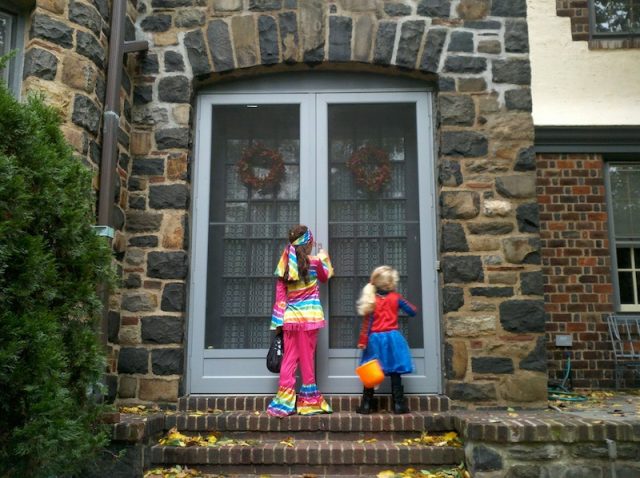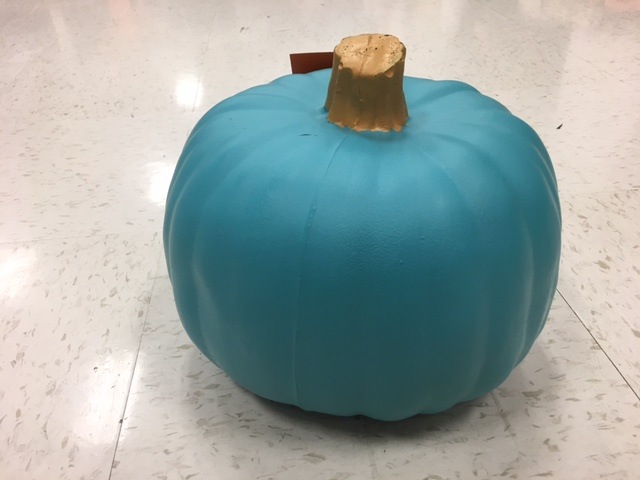


Ghosts, goblins, and ghouls: it’s almost Halloween time again and that means trick-or-treating is around the corner! For special needs children or individuals with autism, trick-or-treating can literally be a scary event. Any kids with ASD challenges that can be triggered by costumed trick-or-treaters showing up randomly at the door.
Alternatively, special needs children or individuals with autism spectrum disorder may have a difficult time with the social norms that accompany trick-or-treating routines. Whether kids with ASD are staying home or venturing out on Halloween night, younger and older kids with autism may need guidance experiencing this holiday.
Let’s start with kids staying home during the traditional festivities. The doorbell is going to ring multiple times, the children outside will be dressed up (some in scary masks or “bloodied” garments), and they will not be coming inside as perhaps other visitors do when they ring a doorbell. This can be confusing for kids with ASD or individuals with autism.
Because parents know their child best, it’s wise to make a decision about whether or not you even want to hand out treats. If not, put up a sign to let people know you are not a “candy house,” or if you think it will work, put a bowl outside with treats in it and let trick-or-treaters know they can take a piece or two. Early in the evening, most young children are with their parents anyway, so a “take one” approach may work.

If you do want to contribute to the custom of candy-handing, then take steps such as these to prepare individuals with autism or kids with ASD for the event:
Watch some non-scary Halloween-themed movies that show kids going trick-or-treating. “It’s the Great Pumpkin, Charlie Brown,” “Curious George: A Halloween Boofest,” and “Casper” are three which are geared toward younger audiences and handle the themes of the holiday with fun storylines.
Read books with an emphasis on kids trick-or-treating. Halloween song storybooks for kids who like music could be just right for your child. Try these titles for easy reading and fun themes.
Froggy’s Halloween by Jonathon London
The Berenstain Bears Trick or Treat by Stan and Jan Berenstain
10 Trick-or-Treaters by Janet Schulman
Social Stories ™ works well with out-of-the-ordinary routines such as trick-or-treating.

Practice what to do when the bell rings or the door knocks. Use your front door for a literal practice with you and your child inside and perhaps a trusted adult and known child on the other side. Make it like a dress rehearsal if that helps! You could also practice how to give out candy, and using last month’s blog on autism chores as a guide, make candy distribution a helpful Halloween night “chore.”
If you know your child with autism has certain fears (for example, s/he reacts negatively to images of Dracula) then try to screen trick-or-treaters as they approach your house from a window or garage door. Then, you can keep your child from seeing that scary costume, or you can give a “two-minute warning” about the costumed kid. If it’s helpful to say something like, “Okay, Alex, here comes a child dressed up as Dracula; remember it’s not really a vampire,” then do it!
Also, you can play “guess who’s next” by having your child communicate guesses as to the next costume or point them out from a homemade deck of cards featuring popular Halloween costumes.
Preoccupy your child with an alternate activity in a room far from the front door. Maybe you hand out treats while your child listens to an audiobook or watches a DVD with headphones on. Remember, you decide how long you will hand out treats; your porch light does not have to be on all evening. Consider setting a time limit for answering your door. If it’s helpful, you can show your child with autism how much time is left before you “close up” for Halloween night.

Let’s continue on individuals with autism or kids with ASD participating in trick-or-treating festivities. Although the ideas above can still be utilized, there is specific preparation needed for cruising the neighborhood in search of treats. First and foremost, consider safety. It might be wise to accompany your child/teen to assist with appropriate behavior, street-crossing, and navigating.
Everything is going to look different at night, and with Halloween decorations here and there, what used to be familiar might be cast in an unfamiliar light. Having a flashlight, some form of identification if you become separated, and a plan, including a route to follow, can be beneficial.
Practice what to do when you approach a door. Some individuals with autism or kids with ASD are non-speaking, and in this case, a small card to hand out to neighbors is a good idea. It can also be taped to the candy bucket. Additionally, consider bringing augmentative communication along and have pre-programmed sentences such as “Trick or Treat!” and “Thank you!”
If you are creative, you can make a spooky or fun sign as part of the costume that “says” trick-or-treat. The child can hold this up when the door is opened.

What is trick-or-treating without the costume! This is something to give thought to ahead of time. Make it sensory-friendly if necessary. Store-bought costumes can be itchy, loose, tight, scratchy, or flimsy. Homemade costumes are a great alternative. Get creative by turning sweats or hoodies into favorite characters or animals.
A favorite costume in our family used a black sweatsuit and glow-in-the-dark paint for bones. And don’t forget: a costume can be as simple as a festive t-shirt or a hat. Keep it simple and avoid props (swords, lightsabers), masks (they reduce visibility), and capes (easy to trip on). Target and Walmart often carry t-shirts with Halloween designs on them for children of all ages.
When food allergies are an issue, consider telling neighbors ahead of time and have them set aside a tummy-friendly treat for your child. (Don’t forget the fruit!) One thing we did was purchase our own safe treats early and deliver them to our trusted neighbors (secretly) so they could then hand those treats to our child.
No worries about gluten, milk, or Red Dye 40. And then we didn’t have to take candy away afterward. Alternatively, with some prep, neighbors can pass out small toys or trinkets, stickers, coins, or crayons.

If a traditional door-to-door trick-or-treating won’t work, think about trunk or treat events in your community, church events, and business or city-sponsored gatherings. Some communities have rec center Halloween gatherings that might prove less intimidating than door-to-door ventures. Shopping malls sometimes give out treats.
And perhaps trick-or-treating with special needs means going to family members’ places rather than neighbors’ or strangers’ doors. Familiarity can reduce the anxiety that might accompany nights like Halloween.
Finally, here’s a few more thoughts on celebrating Halloween with children with autism. If your child comes home with a stash of candy you don’t want her/him to eat, have a trade-in where candy can be given up for another treat: a coloring book, a movie, a t-shirt, etc. If the mood isn’t right on October 31st, try again on November 1st!
Understanding neighbors won’t object to a belated trick-or-treater! And if you have to give up entirely on Halloween itself, there’s nothing wrong with having your own autism-friendly fall party, either preplanned or spontaneous. I’ve learned that we sometimes cannot be bound by the calendar date and must instead celebrate when the situation is right for our family.
Some community events which are dedicated to kids with ASD and other special needs children are as follows (please double-check as events are subject to change):
WarmLine Family Resource Center Halloween Party – Saturday, Oct. 28 – 10:30 a.m.-12:30 p.m.
“The Nightmare Before Christmas” is shown in an autism-friendly way – Saturday, Oct. 21 – 10:00 a.m.
Halloween Haunt at Safetyville – Saturday, Oct. 28 – 11:00 a.m.-4:00 p.m.
Third Annual Best Dressed Fest – Sunday, Oct. 22 – 1:00-4:00 p.m. (A community event with accommodations for special needs children)
Halloween Dance (sponsored by Access Leisure) Saturday, Oct. 28 – 6:30 p.m.-9:00 p.m. (Requires registration; geared toward teens, young adults)
AxIS Halloween Event – Tuesday, Oct. 31, 2:00-4:30 p.m. (Features sensory stations, crafts, games, and safe trick-or-treating). AxIS and The Silver Orange Building is located at 922 57th Street, Sacramento (in East Sac, between H & J). Info: (916) 228-4169
Happy Hauntings!
More special needs resources can be found in our Special Needs Category.
Just enter your email address below and you’ll get an email every time we publish a new post!
Categories :
Tags :
Keri is a special needs parent and a veteran high school English and journalism teacher turned writer. She enjoys reading, hiking, gardening, cooking, traveling, wine tasting, and practicing yoga. Both she and her son love to create art. She has a passion for educating people on all things autism. Visit her blog at https://kerimehome.com.
View All PostsNotifications